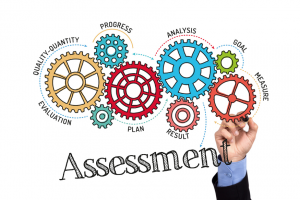
The #1 way to become a strong and effective leader is by facilitating good working relationships, regardless of the person, situation, or other factors.
Years ago, a general manager told me I didn’t know what the “bleep” I was talking about because I was a woman. Yes, he really did say those words. Fortunately, I had a smart male co-worker guide me through how to respond. He said, “Go visit with him … listen and learn!” Even though I didn’t want to do that, I did. From that point forward, I was on only person the general manager would work with!
At the time, it would have been easy to claim discrimination. And that would not have resolved the underlying issue. The general manager didn’t trust working with women at a managerial level! But, because I was able to set aside his remark and meet with him, I learned about his goals and how I could facilitate guiding him to achieve them. This meeting started the positive process of building a strong and effective working relationship.
Here’s what I’ve learned during my career.
5 Tips to Become a Strong and Effective Facilitator
Develop Strong Skills and Competencies. Get back to basics and develop a solid working knowledge of your profession. Learn how to work with and through your team to get the answers needed for great results. You will become a great results-producer and an expert facilitator by doing this. And others will now see and listen to you differently.
Learn How to Self-Promote. Be present to your results and the impact they have on others. This ensures that your efforts, and those of your team, do not go unnoticed … a great confidence booster! Share your results with your boss; on your resume, bio, and performance appraisals; and during interviews.
Give Respect to Get It. Treat others with respect. Yes, this can sometimes be hard … especially if you get triggered by what someone said or did. Remember, taking responsibility for your reactions and triggers instead of blaming others is critical. It’s the primary hallmark of a great facilitator who can create positive change.
Become an Influencer. Be For, Not Against. Complaining or rallying against something or someone will only create more resistance. For example, stating a negative creates more negative reactions. So instead, create a positive mantra, “A strong team excels together.” Now, make sure your actions and words support the new mantra.
Be Coachable. Take workshops, hire an executive coach, and read history. It will help you understand that you are not alone in your quest to be a strong and effective facilitator and leader. In addition, lifelong learning will help you develop the objectivity and compassion needed to work with people with different points of view.
©Jeannette Seibly 2021 All Rights Reserved
 Jeannette Seibly is The Leadership Results Coach. She has guided the creation of three millionaires and countless 6-figure income professionals for almost 30 years. Her brags include being an award-winning international executive and family business management consultant, and keynote speaker. Recently, she was able to add another brag. She is now an international Amazon Bestselling author of, The Old Wooden Rocker. Have questions? Need a speaker or facilitator? Contact Jeannette for a confidential conversation.
Jeannette Seibly is The Leadership Results Coach. She has guided the creation of three millionaires and countless 6-figure income professionals for almost 30 years. Her brags include being an award-winning international executive and family business management consultant, and keynote speaker. Recently, she was able to add another brag. She is now an international Amazon Bestselling author of, The Old Wooden Rocker. Have questions? Need a speaker or facilitator? Contact Jeannette for a confidential conversation.
A Note from Jeannette about becoming a strong and effective leader. The critical success factor I’ve experienced over and over in my almost 30 years of being an executive coach and facilitator is that those who excel as leaders develop excellent facilitation skills. These skills normally translate into excellent working relationships. Becoming a master facilitator takes work. If you’re stuck and unclear on what to say or do in difficult situations, contact me for a confidential conversation.
Want to be an influencer? It requires more than standing up and speaking up. Get your Eight Tips to Increase Your Ability to Influence









 Jeannette Seibly is The Leadership Results Coach. During the past 29 years, she has guided the creation of three millionaires and countless 6-figure income professionals. Her brags also include being an award-winning executive coach, management consultant, and keynote speaker. If you’re struggling to get unstuck, now is a great time to
Jeannette Seibly is The Leadership Results Coach. During the past 29 years, she has guided the creation of three millionaires and countless 6-figure income professionals. Her brags also include being an award-winning executive coach, management consultant, and keynote speaker. If you’re struggling to get unstuck, now is a great time to 